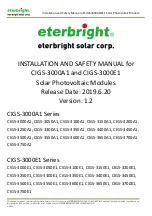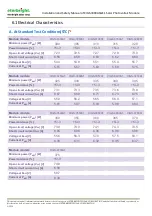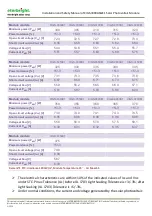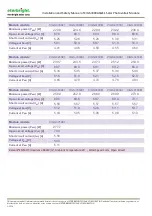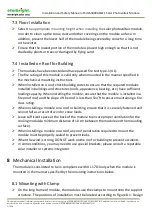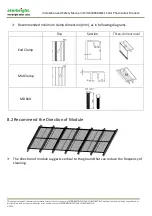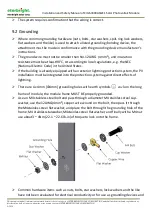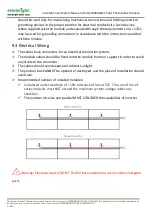
Installation and Safety Manual of CIGS-3000A1&E1 Solar Photovoltaic Module
This document and all information contained herein is the sole property of ETERBRIGHT SOLAR CORPORATION and shall not be distributed, reproduced, or
disclosed in whole or in part without the prior written consent of ETERBRIGHT SOLAR CORPORATION.
A3-224
8.3 Tilt Angle Selection
The solar cells absorb sunlight and then
transform the light energy into
electricity. To ensure that the maximum
efficiency of absorption can be
obtained, the front of the
photovoltaic module should
face the sunlight
vertically as much
as possible.
For this reason, the
optimal tilt for
the photovoltaic
module is roughly the same as the latitude of installation location.
We recommend installing the modules with a tilt angle of at least10°. To make it easier
for dust to be washed off by rain and reduce the dirt or other materials that
accumulate on the surface of photovoltaic modules.
9
Electrical Installation
Under normal conditions, a photovoltaic module is likely to produce more current and
/or voltage than reported under standard test conditions. Accordingly, the values of Isc
and Voc marked on this module should be multiplied by a factor of 1.25 when
determining component voltage ratings, conductor current ratings, fuse sizes and size
of controls connected to the photovoltaic module output.
Maximum series overcurrent protective device is 8A.
In the United States, refer to Section 690-8 of the National Electrical Code to determine
the appropriate specification of wire and fuse, which should add a multiplying factor of
1.25 (80% de-rating) from Isc.
A module with exposed conductive parts is considered to be in compliance with UL
1703 only when it is electrically grounded in accordance with the instructions
presented below and the requirements of the National Electrical Code.
9.1 Electrical Installation Precautions
The cross section of the cables and the capacity of the connectors must be selected to
suit the maximum system short circuit current.
Do not carry out installation when PV modules, installation tools or installation area
are exposed to water.

